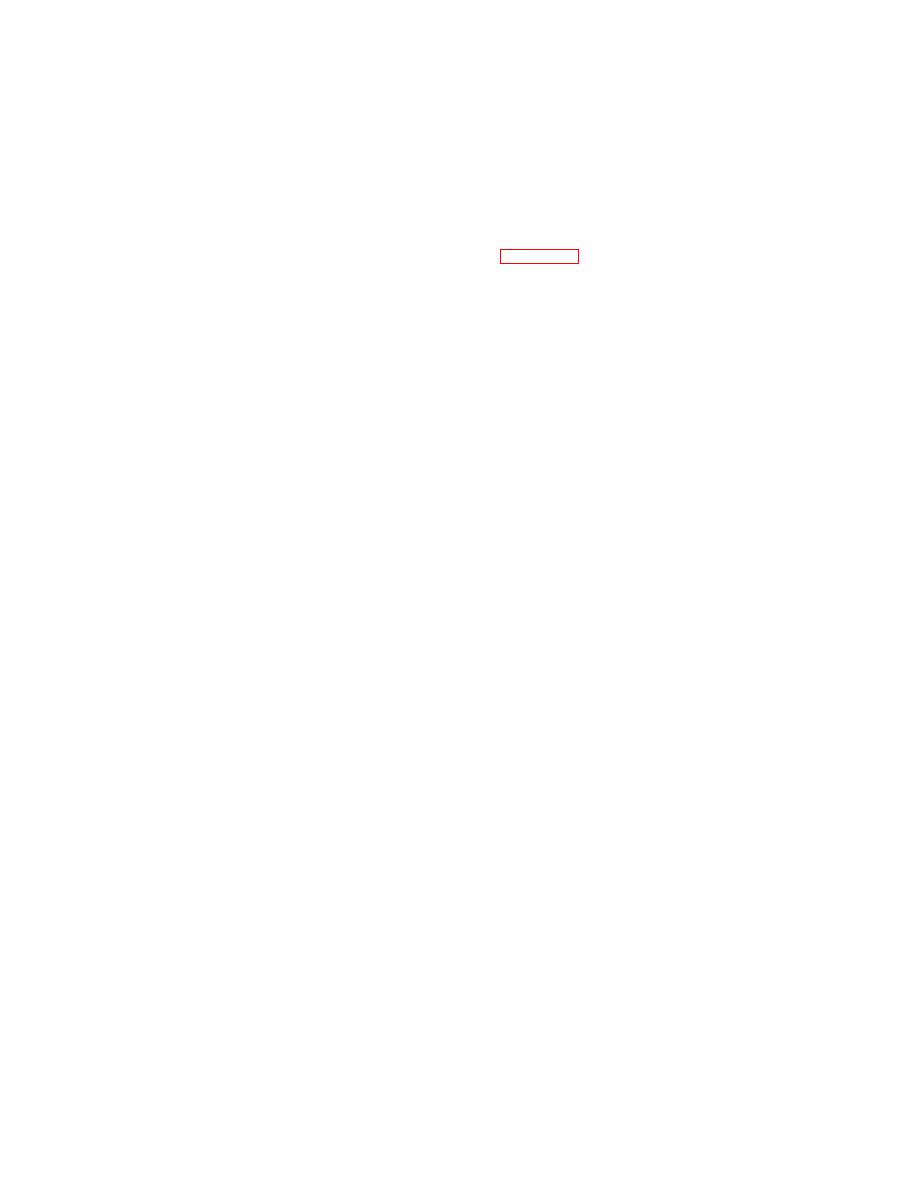 |
|||
|
|
|||
|
|
|||
| ||||||||||
|
|
 (2) Maximum wear allowed for parts is as follows:
Note. Plugs are used to
close off the normal location of
Mounting arm bushings. 0.005-0.010 inch
lubrication fittings on the ball
Mounting arm journals. 0.005-0.010 inch
sockets. If necessary, these plugs
Pivot arm pin. 0.005-0.010 inch
may be replaced with lubrication
Pivot arm bushings.
0.005--0.010 inch
fittings for external greasing of the
Tie rod and drag link balls. No set limit. Replace ball
ball sockets.
when out of round (or when plugs can no longer be set
(4) The ball sockets of the tie rods must be packed
snug against ball.
with high-quality chassis lubricant per LO 10-3930-620-
(3) Relubricate parts according to LO 10-3930-620-12.
12.
d. Reassembly. Reassemble in the reverse order
of figure 3-74.
Section VI. DRIVE GROUP
(c) Noise heard while turning the lift
3-42. General
truck to the right may indicate the noise is in the left side
The drive unit is a double reduction, full-floating, internal
of the drive train (bull gears, jackshaft, etc.). Noise
gear drive, with drive wheels and differential assembly
heard while making a tight left turn may indicate the
supported by tapered roller bearings. The axle drive
source of the noise is in the right side of the drive train
shafts (jackshafts) are supported by double row thrust
(bull gear, jackshaft, etc.).
bearings. The differential carrier is mounted at the
(3) If noise cannot be located, raise front end
center of the drive axle housing. The ring gear is bolted
of lift truck, using a suitable lifting device, until drive
to the differential case, which in turn houses the spider
wheels are above the ground.
gears. The pinion gear is mounted on the drive motor
(4) Install blocking and remove lifting device.
armature shaft. Double reduction is obtained through the
(5) Operate the drive motor in forward and
spiral bevel ring and pinion gears and an internal tooth
reverse while varying the speed of drive wheels.
ring gear (bull gear) within each drive wheel.
(6) Listen to noise level to determine source
3-43. Drive Axle Noise
of noise.
a. Drive axle noise may originate in the drive train
(7) If source of noise cannot be located after
because of misalignment or improperly adjusted drive
performing steps (2) through (6), a complete
train components (e.g. alinement of the drive axle and
disassembly and inspection of each component will have
drive motor, ring and pinion gear adjustments).
The
to be performed.
drive train should be disassembled just far enough to
Note.
After
each
visual
remedy or reduce noise level. Parts should be
reassembled at the lowest noise level. The following
check
and
each
mechanical
visual and operational checks and adjustments are
adjustment. perform an operational
designed to detect, reduce, and / or eliminate drive axle
check of drive motor to determine if
noise:
noise level has been reduced or
(1) Visually check differential oil level and
eliminated.
insure that the specified lubricant is being used in
(8) Readjust wheel bearing adjusting nut by
differential. (LO 10-3930-620-12.)
loosening adjusting nut and torquing nut to 50 foot-
(2) Operate lift truck in forward and reverse
pounds while rotating wheel six times in each direction.
gears for a short period of time under the following
(9) Loosen adjusting nut between 30 degrees
conditions: 1) full acceleration, 2) coasting, and 3) tight
minimum) and 60 degrees (maximum) to allow insertion
left and right turns. Note any noise in drive train while
of cotter pin.
operating lift truck under these conditions and then refer
(10) Install cotter pin but do not secure.
to steps (a) through (c) to aid in identifying cause of
(11) drive motor and listen to noise level.
noise.
(12) If noise level is unchanged, set torque
(a) Noise from the drive train during full
wrench to a different value and torque adjusting nut.
acceleration and not heard during coasting may indicate
(13) Operate drive motor and listen to noise
misalignment of the drive train components, such as
level. Insure that adjusting nut is torqued to the value that
between the drive axle and drive motor.
provides the lowest noise level.
(b) Noise heard while the lift truck is
(14) After adjusting wheel bearings to lowest
coasting and not heard during full acceleration may
noise level, measure the backlash between the bull
indicate worn parts (e.g. worn bearings) or excessive
play between parts (e.g. ring and pinion gear).
3-87
|
|
Privacy Statement - Press Release - Copyright Information. - Contact Us |